Check out my tips for shooting sculpture photography in any environment.
1. What Is Sculpture Photography?
Natural and human-made sculpture and statues are in my top 5 things to photograph. You can revisit the same artwork several times and try different techniques. Another bonus is that they don’t answer back or blink when you squeeze the shutter. The range of sculpture in your home and out in the community is vast. If you’re in an ancient city such as Rome, you’ll see traditional forms that are thousands of years old. In a new city, you’re surrounded by modern art with quirky stories. Look around your home for vases, piles of books, and unusual ornaments. Perhaps cemetery photography is your thing with intricate headstones and wrought iron. Whatever you’re into, photographing statues and sculptures will provide opportunities to improve your camera skills.
2. How To Photograph Sculptures In Different Lighting
Lighting makes a powerful impact on your sculpture photograph. It sets the mood and exposes or hides parts of the artwork. Photographing a small 3D artwork at home? You’ll have great control over lighting conditions. It can be much more challenging if you arephotographing a large statue in a city. Sometimes those challenges make the best photos, so persevere!
What’s the Best Light for Sculpture Photography?
Like most genres of photography, the golden hour is a great time to take a photo of a statue or sculpture. Using soft natural light avoids harsh contrasts and reduces the need for post-production. Photographing inside? If possible, photograph the sculpture near a window on a cloudy day or during the golden hour.
How Do You Use Contre-Jour in Statue Photography?
Is the sun setting behind the sculpture? Is it your only opportunity to make the photo during your trip? Try using the contre-jour technique for an arty approach. This means the statue or sculpture is between you and the main source of light. Learn about dynamic range and adjust your settings so there is enough light on the artwork. You can adjust the highlights later. Manoeuvre around so the sun isn’t in the frame. This technique can produce a unique image that evokes different moods.
What If the Sunlight Is Too Bright?
You can’t always wait for the perfect light if you are traveling or have a deadline. Black and white photography is your friend in these situations! Monochrome photography helps to ‘declutter’ a scene and emphasize your subject. Convert your photo to black and white in post-production. Adjust the color sliders and highlights to find the right balance and mood.
How Do You Photograph Statues at Night?
Some sculpture comes into its own at night. Designed lighting effects by artists give your photo a huge wow factor. You can also get great results by using artificial light from shop windows and street lights. A tripod and shutter release cable are essential (and warm clothing in the winter!). Experiment with different shutter speeds to determine how much light enters the camera. Keep the ISO as low as possible to reduce noise in your photo. Maintaining a sharp focus can be the hardest thing for tired eyes in the dark so take your time. It’s frustrating opening up a perfectly exposed but fuzzy photo when you get home!
How Do You Photograph Sculptures in Gallery Lighting Conditions?
Photographing sculpture and statues in galleries is my biggest challenge. Many galleries feature no natural light and you can be jostling for space. If galleries do allow you to take photos, they often forbid tripods. The result? Low light and no wiggle room for your elbows or shutter speed. This reduces your options for your camera settings. Increase your ISO so that your aperture provides detail throughout the sculpture. You’ll need to maintain a hand-held shutter speed too.
3. Choosing the Background of Your Sculpture Photographs
The background of a sculpture photograph can make or break your image. A clutter-free background will champion the sculpture and create a contemplative mood. Some interactive and urban sculpture needs a bit more context. Ask yourself what the purpose of the sculpture and the photograph is. Does it improve with people in the photo? Or does it need to stand alone? For large public pieces, you may not have a choice! Try adjusting the background of permanently-placed sculpture through canny camera tricks.
Top Tricks to Avoid a Busy City Background
Moving around and up and down around a large sculpture is the best way to adjust its background. Look for trees or shrubs in the background to provide an evenly colored backdrop. Adjust your aperture to blur the background but ensure all parts of the sculpture are in focus. I find a good zoom lens works well to isolate the subject in this situation. Keep an eye on the lighting as you move and adjust your settings accordingly. Still finding it tricky to avoid an urban background? Embrace it! The setting of the sculpture provides context and storytelling. Use your composition to draw the eye to the sculpture. Cities are full of leading lines, symmetry, and repeating patterns. Explore associated symbolism through nearby signage and capture people interacting with the sculpture. Art is for everyone. Show this philosophy in your photograph.
What Background Is Best for Sculpture Photography at Home?
If you’re lucky to photograph sculpture at home, you can be creative with your background. Keep the background simple with one main color. Neutral colors work best for showing off the artwork. Feeling brave? Investigate the color wheel and consider complementary or analogous shades to the sculpture. If you want to earn extra photography brownie points, make your own backdrops! You’ll end up with something bespoke and unique.
4. How Do You Photograph a 3D Object From Multiple Angles?
Get physical and spend time walking around a sculpture before photographing it. This rule applies to large and small statues and sculptures. Put your leg muscles to work and crouch down. Stand on a chair or ladder. Access a nearby building for a different high angle. How does the light hit the artwork from above? What lines are enhanced from a low viewpoint? Try using a different angle from the conventional to tell a different story in your photograph.
5. Best Camera Settings For Your Sculpture Photography
How Do You Photograph a Mug?
This seems like an odd question for sculpture photography. But the same rules apply. You need to perfect the lighting and angles, and your camera settings are a key part of this. Aperture, shutter speed, ISO, white balance, and focal points are all vital. The great thing is that unlike street photography or children’s portraiture, you can take it slow. You can practice your settings on the same subject. Sculpture photography allows you to get into the zone and take it slowly.
What’s the Best Aperture for Photographing Sculptures?
Aperture settings can be a tricky thing with sculpture photography. It’s sometimes a good idea to blur out the background using a wide aperture of below f/5.0. There is a risk of portions of the sculpture being out of focus if it is particularly deep. The more you take statue photographs, the better you’ll become at judging the right aperture for your camera and subject.
Is Shutter Speed Important in Sculpture Photography?
I’m a stickler for using ISO 100 and a moderate/slow shutter speed depending on the light levels. The exception is if I’m photographing kinetic sculptures, or in art galleries. The low ISO produces a cleaner image and is a good discipline to work with. Unless it’s a moving sculpture, it’s not going anywhere so you can take your time!
6. Essential Gear to Make Your Sculpture Picture
There’s no point in having the fancy gear if you don’t pay attention to the technical basics. There are definitely some pieces of equipment that make taking photos of sculpture easier.
How Do You Keep Your Camera Still?
Maintaining a perfectly still camera is essential for sculpture photography. It’s also important for creating compositions in post-production or capture background movement. Invest in a tripod and shutter release. Sometimes the gear isn’t quite enough to avoid camera shake. It’s not unusual to see me lying on the ground grasping the legs of the tripod in heavy winds!
Which Lens Do You Use for Sculpture Photography?
Your choice of lens depends on the purpose of your photo, and the vibe you want to create. Only have one lens? Use that to its best advantage! I like to use a range of lenses depending on the statue. To show the wider environment of the artwork, a 50mm fixed lens usually does the trick. For beautiful close-ups of details, I use my 70-200mm lens. There have been times when the sculpture has been so huge that only a wide-angle will work.
What Extra Equipment Should I Use for Statue and Sculpture Photography?
Below are some extra ideas for gear that I use:
Ladder (tall or short) – this helps photograph larger artworks. It also reduces the use of the vertical transform tool in post-production. Best to take a small ladder if using the bus! Waterproof rug – for all those times you have to sprawl on the ground to show the impressive height of a statue. Reflector – to throw more lighting at the subject. Studio light – for at-home sculpture photography
7. Understanding Sculptures and Sculptors
My favorite part of photographing sculptures and statues is learning about the artists and their artwork. Search online to understand their methods of work, motivation, and influences. If possible, find out the story of the sculpture you’re photographing and its interpretations. This will help you apply the right mood to the photos. Is the artist contemporary and local? Reach out to them and ask them some questions.
How Do Professionals Photograph Their Artwork?
Wondering how to photograph a portfolio for sculpting and artwork? It’s important that you show off your work perfectly. Try borrowing these tricks from the professionals:
use a white backdrop. A large sheet of foam board or sheet will work, but iron the sheet first! use a normal aperture to make sure all your sculpture is in focus photograph from different angles set up your mini studio near a window or outside on a lightly clouded day use a tripod
Conclusion
Photographing sculpture and other artwork is very rewarding. It is a great way to learn about traditional and contemporary art, and how they impact the world around us. Your sculpture photography skills are easy to apply to still life, portraiture, landscape, and travel photography. So pack your lunch box, tripod, and waterproof blanket. Then go explore your local sculpture scene.



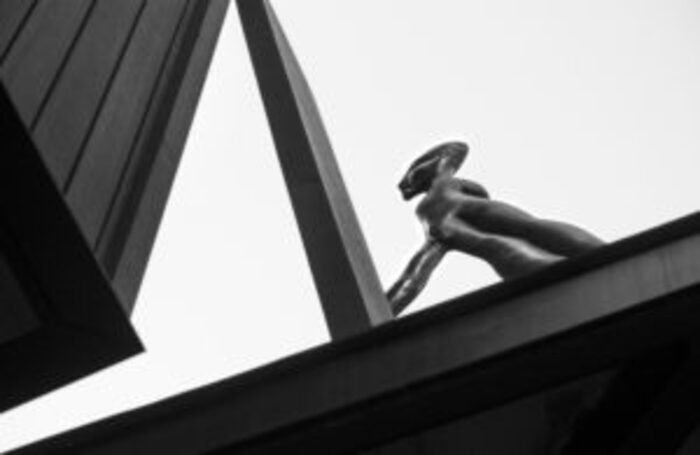
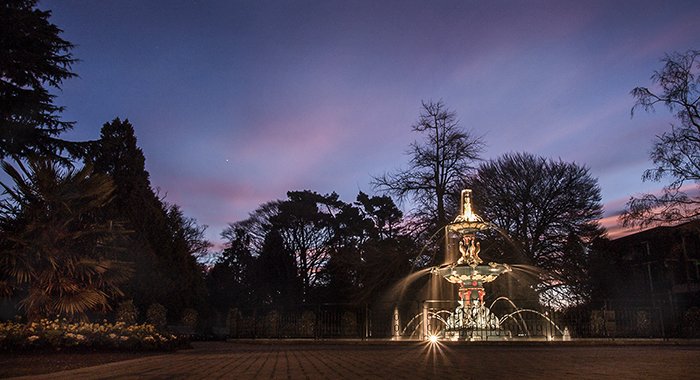
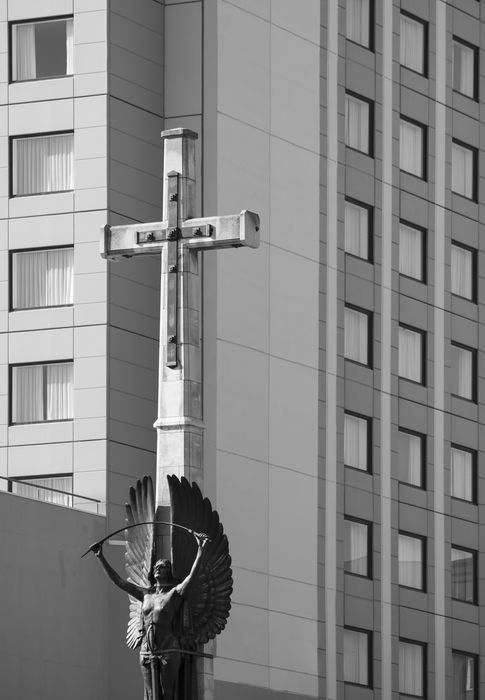


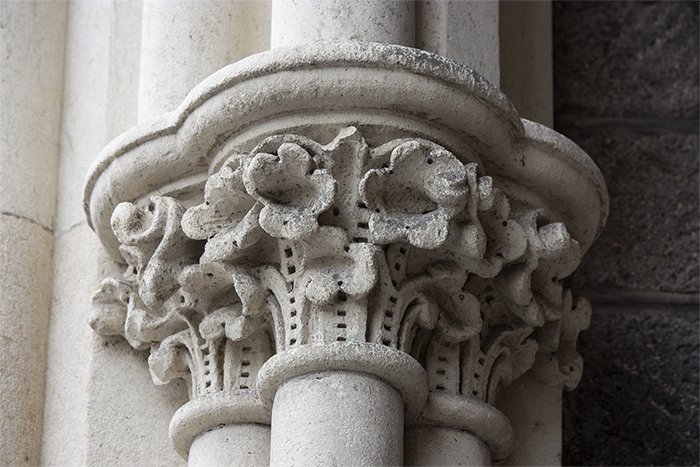
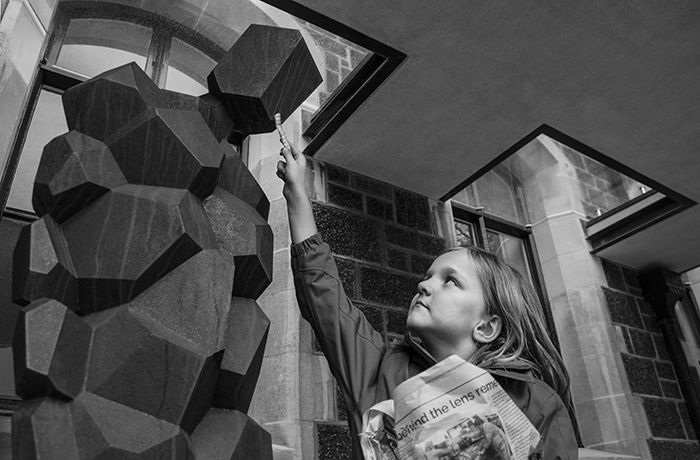

title: “How To Shoot Beautiful Statue Or Sculpture Photography” ShowToc: true date: “2023-02-24” author: “Bruce Brown”
Check out my tips for shooting sculpture photography in any environment.
1. What Is Sculpture Photography?
Natural and human-made sculpture and statues are in my top 5 things to photograph. You can revisit the same artwork several times and try different techniques. Another bonus is that they don’t answer back or blink when you squeeze the shutter. The range of sculpture in your home and out in the community is vast. If you’re in an ancient city such as Rome, you’ll see traditional forms that are thousands of years old. In a new city, you’re surrounded by modern art with quirky stories. Look around your home for vases, piles of books, and unusual ornaments. Perhaps cemetery photography is your thing with intricate headstones and wrought iron. Whatever you’re into, photographing statues and sculptures will provide opportunities to improve your camera skills.
2. How To Photograph Sculptures In Different Lighting
Lighting makes a powerful impact on your sculpture photograph. It sets the mood and exposes or hides parts of the artwork. Photographing a small 3D artwork at home? You’ll have great control over lighting conditions. It can be much more challenging if you arephotographing a large statue in a city. Sometimes those challenges make the best photos, so persevere!
What’s the Best Light for Sculpture Photography?
Like most genres of photography, the golden hour is a great time to take a photo of a statue or sculpture. Using soft natural light avoids harsh contrasts and reduces the need for post-production. Photographing inside? If possible, photograph the sculpture near a window on a cloudy day or during the golden hour.
How Do You Use Contre-Jour in Statue Photography?
Is the sun setting behind the sculpture? Is it your only opportunity to make the photo during your trip? Try using the contre-jour technique for an arty approach. This means the statue or sculpture is between you and the main source of light. Learn about dynamic range and adjust your settings so there is enough light on the artwork. You can adjust the highlights later. Manoeuvre around so the sun isn’t in the frame. This technique can produce a unique image that evokes different moods.
What If the Sunlight Is Too Bright?
You can’t always wait for the perfect light if you are traveling or have a deadline. Black and white photography is your friend in these situations! Monochrome photography helps to ‘declutter’ a scene and emphasize your subject. Convert your photo to black and white in post-production. Adjust the color sliders and highlights to find the right balance and mood.
How Do You Photograph Statues at Night?
Some sculpture comes into its own at night. Designed lighting effects by artists give your photo a huge wow factor. You can also get great results by using artificial light from shop windows and street lights. A tripod and shutter release cable are essential (and warm clothing in the winter!). Experiment with different shutter speeds to determine how much light enters the camera. Keep the ISO as low as possible to reduce noise in your photo. Maintaining a sharp focus can be the hardest thing for tired eyes in the dark so take your time. It’s frustrating opening up a perfectly exposed but fuzzy photo when you get home!
How Do You Photograph Sculptures in Gallery Lighting Conditions?
Photographing sculpture and statues in galleries is my biggest challenge. Many galleries feature no natural light and you can be jostling for space. If galleries do allow you to take photos, they often forbid tripods. The result? Low light and no wiggle room for your elbows or shutter speed. This reduces your options for your camera settings. Increase your ISO so that your aperture provides detail throughout the sculpture. You’ll need to maintain a hand-held shutter speed too.
3. Choosing the Background of Your Sculpture Photographs
The background of a sculpture photograph can make or break your image. A clutter-free background will champion the sculpture and create a contemplative mood. Some interactive and urban sculpture needs a bit more context. Ask yourself what the purpose of the sculpture and the photograph is. Does it improve with people in the photo? Or does it need to stand alone? For large public pieces, you may not have a choice! Try adjusting the background of permanently-placed sculpture through canny camera tricks.
Top Tricks to Avoid a Busy City Background
Moving around and up and down around a large sculpture is the best way to adjust its background. Look for trees or shrubs in the background to provide an evenly colored backdrop. Adjust your aperture to blur the background but ensure all parts of the sculpture are in focus. I find a good zoom lens works well to isolate the subject in this situation. Keep an eye on the lighting as you move and adjust your settings accordingly. Still finding it tricky to avoid an urban background? Embrace it! The setting of the sculpture provides context and storytelling. Use your composition to draw the eye to the sculpture. Cities are full of leading lines, symmetry, and repeating patterns. Explore associated symbolism through nearby signage and capture people interacting with the sculpture. Art is for everyone. Show this philosophy in your photograph.
What Background Is Best for Sculpture Photography at Home?
If you’re lucky to photograph sculpture at home, you can be creative with your background. Keep the background simple with one main color. Neutral colors work best for showing off the artwork. Feeling brave? Investigate the color wheel and consider complementary or analogous shades to the sculpture. If you want to earn extra photography brownie points, make your own backdrops! You’ll end up with something bespoke and unique.
4. How Do You Photograph a 3D Object From Multiple Angles?
Get physical and spend time walking around a sculpture before photographing it. This rule applies to large and small statues and sculptures. Put your leg muscles to work and crouch down. Stand on a chair or ladder. Access a nearby building for a different high angle. How does the light hit the artwork from above? What lines are enhanced from a low viewpoint? Try using a different angle from the conventional to tell a different story in your photograph.
5. Best Camera Settings For Your Sculpture Photography
How Do You Photograph a Mug?
This seems like an odd question for sculpture photography. But the same rules apply. You need to perfect the lighting and angles, and your camera settings are a key part of this. Aperture, shutter speed, ISO, white balance, and focal points are all vital. The great thing is that unlike street photography or children’s portraiture, you can take it slow. You can practice your settings on the same subject. Sculpture photography allows you to get into the zone and take it slowly.
What’s the Best Aperture for Photographing Sculptures?
Aperture settings can be a tricky thing with sculpture photography. It’s sometimes a good idea to blur out the background using a wide aperture of below f/5.0. There is a risk of portions of the sculpture being out of focus if it is particularly deep. The more you take statue photographs, the better you’ll become at judging the right aperture for your camera and subject.
Is Shutter Speed Important in Sculpture Photography?
I’m a stickler for using ISO 100 and a moderate/slow shutter speed depending on the light levels. The exception is if I’m photographing kinetic sculptures, or in art galleries. The low ISO produces a cleaner image and is a good discipline to work with. Unless it’s a moving sculpture, it’s not going anywhere so you can take your time!
6. Essential Gear to Make Your Sculpture Picture
There’s no point in having the fancy gear if you don’t pay attention to the technical basics. There are definitely some pieces of equipment that make taking photos of sculpture easier.
How Do You Keep Your Camera Still?
Maintaining a perfectly still camera is essential for sculpture photography. It’s also important for creating compositions in post-production or capture background movement. Invest in a tripod and shutter release. Sometimes the gear isn’t quite enough to avoid camera shake. It’s not unusual to see me lying on the ground grasping the legs of the tripod in heavy winds!
Which Lens Do You Use for Sculpture Photography?
Your choice of lens depends on the purpose of your photo, and the vibe you want to create. Only have one lens? Use that to its best advantage! I like to use a range of lenses depending on the statue. To show the wider environment of the artwork, a 50mm fixed lens usually does the trick. For beautiful close-ups of details, I use my 70-200mm lens. There have been times when the sculpture has been so huge that only a wide-angle will work.
What Extra Equipment Should I Use for Statue and Sculpture Photography?
Below are some extra ideas for gear that I use:
Ladder (tall or short) – this helps photograph larger artworks. It also reduces the use of the vertical transform tool in post-production. Best to take a small ladder if using the bus! Waterproof rug – for all those times you have to sprawl on the ground to show the impressive height of a statue. Reflector – to throw more lighting at the subject. Studio light – for at-home sculpture photography
7. Understanding Sculptures and Sculptors
My favorite part of photographing sculptures and statues is learning about the artists and their artwork. Search online to understand their methods of work, motivation, and influences. If possible, find out the story of the sculpture you’re photographing and its interpretations. This will help you apply the right mood to the photos. Is the artist contemporary and local? Reach out to them and ask them some questions.
How Do Professionals Photograph Their Artwork?
Wondering how to photograph a portfolio for sculpting and artwork? It’s important that you show off your work perfectly. Try borrowing these tricks from the professionals:
use a white backdrop. A large sheet of foam board or sheet will work, but iron the sheet first! use a normal aperture to make sure all your sculpture is in focus photograph from different angles set up your mini studio near a window or outside on a lightly clouded day use a tripod
Conclusion
Photographing sculpture and other artwork is very rewarding. It is a great way to learn about traditional and contemporary art, and how they impact the world around us. Your sculpture photography skills are easy to apply to still life, portraiture, landscape, and travel photography. So pack your lunch box, tripod, and waterproof blanket. Then go explore your local sculpture scene.










